What are Nanobubbles?
Most scientists categorize nanobubbles as bubbles that are around 100 nanometers in diameter, and Moleaer considers bubbles less than 200 nm as nanobubbles. At this size, nanobubbles are nanoscopic, meaning they cannot be viewed with the unaided eye. It’s hard to truly grasp the small size of nanobubbles. The easiest way is to imagine a bubble that is 2,500 times smaller than a single grain of salt.
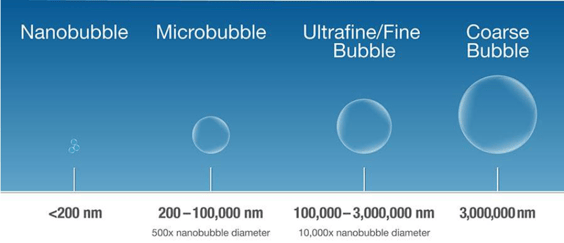
Contained within the nanobubbles are gases, typically air or oxygen, though any gas can be used. Due to their size and charge, nanobubbles exhibit unique properties that improve numerous physical, chemical, and biological processes.
One of the key properties of nanobubbles is their neutral buoyancy, which means they can remain suspended in liquid for months without rising to the surface and off-gassing. Larger bubbles – think of aerating a fish tank, pond or lake with traditional aeration equipment – are much bigger and are buoyant, quickly rising to the surface and escaping into the atmosphere.
.png?width=1080&height=608&name=Moleaer_Nanobubble_Motion_Graphic_Final%20(1).png)
Measuring, Viewing, and Studying Nano-Sized Bubbles
Ultra-fine or nano-bubbles cannot be seen with the unaided eye, so scientists who study nanobubbles use special equipment to analyze nanobubbles. Before we go into these specialized products, we’ll share a simple way to view nanobubbles that anyone can do.
Qualitative Method to Visualize Nanobubbles
Nanobubbles generated in a liquid can be easily viewed by shining an inexpensive green laser pen through a sample of nanobubble-treated, deionized water. Using a clear beaker, a sample can be taken of the liquid containing the nanobubbles along with a second control sample of deionized water without nanobubbles. The light from the laser pen directed into the water will appear fluorescent. The brighter the light (compared to the control sample), the higher the concentration of nanobubbles because the light is refracting off the nanobubbles in the water. This is a quick way of finding out if you’ve generated any nanobubbles, according to Dr. Sohail Akhter, VP of Research and Development at Moleaer.
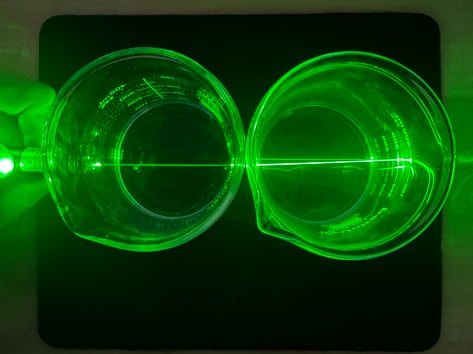
Quantitative Methods for Measuring and Studying Nanobubbles
Using the laser is not the most scientific way to view and analyze nanobubbles. Scientists have established more consistent and reliable methods of nanobubble generation and characterization.
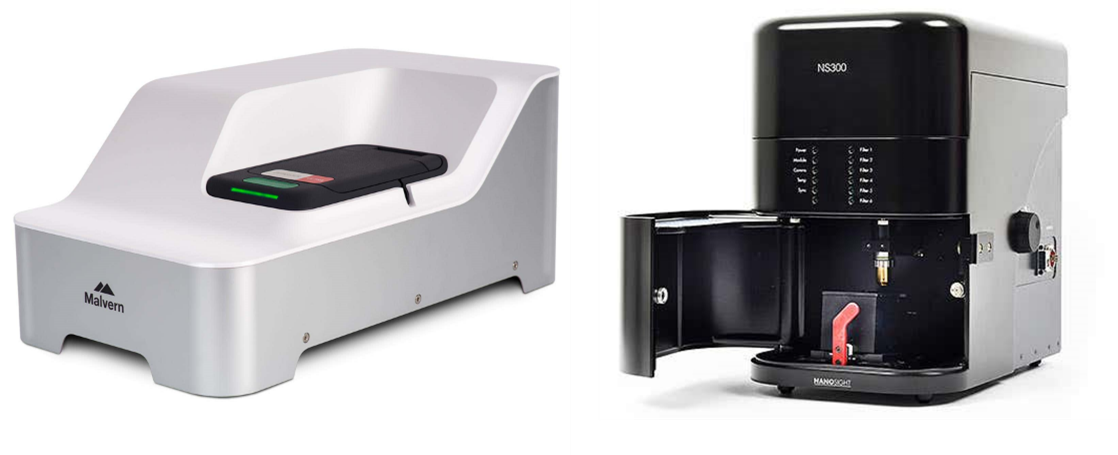
NanoSight Product Range
The Nanoparticle Tracking Analysis (NTA) technique through the NanoSight product range from Malvern Panalytical is particularly adept at the detection and analysis (size, size distribution, number concentration) of the relatively low concentration nanobubble structures of extremely small size (compared to ‘conventional’ bubbles). NTA offers a unique capability to characterize nanobubbles by directly visualizing nanoscale particles in suspension (10 nm to 2000 nm) with high resolution, in real-time, and with minimal sample preparation. NanoSight from Malvern Panalytical pioneered this technique and continues to be the industry’s and Moleaer’s primary choice.
NanoSight by Malvern Panalytical utilizes the properties of light scattering and Brownian motion (the random motion of particles) to obtain the particle size and absolute number of the nanobubbles in a liquid suspension. A laser beam is passed through the sample chamber, and the particles or nanobubbles in suspension in the path of the beam, scatter light in such a manner that they can easily be visualized via a 20x magnification microscope with a mounted camera. The camera, which operates at approximately 25 frames per second (fps), captures a video file of the particles or nanobubbles moving under Brownian motion within the field of view of approximately 100 µm x 80 µm x 10 µm.
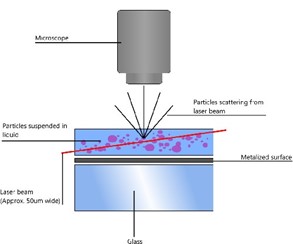
Malvern Panalytical released the new NanoSight Pro in 2023 with upgraded software, improved accessibility, higher resolution and greater insight into samples with fluorescence signals.
A full analysis of the concentration of nanobubbles can be taken within a matter of minutes, according to Dr. Ragy Ragheb, Technical Specialist at Malvern Panalytical. You can learn more about the NanoSight product range and also view a demo at your desk.
Zetasizer Product Range
Malvern Panalytical offers leading instrumentation to measure Dynamic and Electrophoretic Light Scattering (DLS and ELS, respectively) through the Zetasizer product range providing the nanobubble size and Zeta potential anywhere from a few nanometers to 100 micrometers in diameter. This helps scientists understand nanobubbles’ colloidal stability through Zeta potential measurements and allows them to measure the overall effective charge of nanobubbles.
Electrophoretic Light Scattering (ELS), a technique used to measure the electrophoretic mobility of particles in dispersion, or molecules in solution, is one way to measure Zeta potential. Electrophoretic mobility means that particles move under the influence of an electric field, and this is controlled by the magnitude of the charge. Various gases might typically yield negative charges anywhere from -20 to -27 mV.
Understanding Zeta Potential
Zeta potential is an important aspect of bubble stability. It should be measured because the charge of nanobubbles can determine their ability to bind and remove contaminants and other particles in a liquid. For instance, higher Zeta potential means greater stability against bubble coalescence and destruction. Nanobubbles are typically stable because there is some charge present at the gas-liquid interface. Most likely, negatively charged OH- hydroxide anions help to stabilize the bubbles.
ELS can measure the overall effective negative charge of these objects. Zeta potential magnitude might typically decrease in magnitude when salts are added. This happens when you are effectively shielding the charges around the bubble.
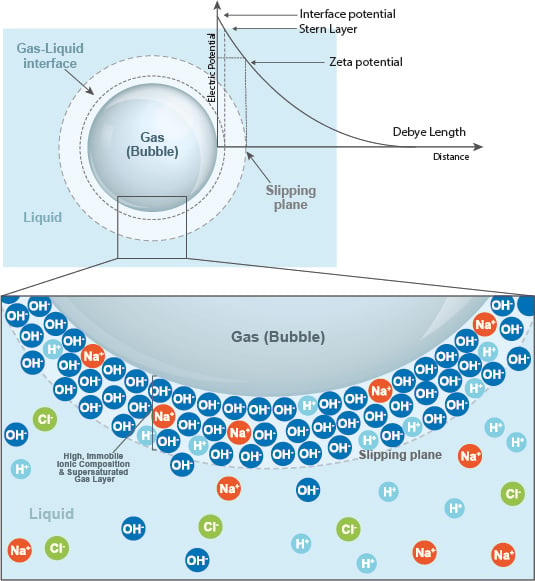
Moleaer’s Nanobubble Validation
Moleaer relies on both third-party validation from universities and research institutions as well as internal testing and research to establish the size and concentration of nanobubbles in Moleaer nanobubble-enriched water. Here’s an overview of some of the research validating Moleaer’s nanobubble technology.
Moleaer’s Nanobubbles & Oxidation Properties
Independent researchers used Malvern Panalytical’s NanoSight product series to validate the size and concentration of Moleaer’s nanobubbles. Paul Westerhoff, Ph.D., the Deputy Director of Nanotechnology-Enabled Water Treatment (NEWT) and University of Maine confirmed the cleaning advantages and effectiveness of Moleaer nanobubbles demonstrating that Moleaer's nanobubble solution cleans surfaces 2.4 times more effectively than tap water.
Moleaer’s Nanobubble Technology & Oxygen Transfer Efficiency
According to third-party evaluation by UCLA professor and aeration expert, Michael Stenstrom, Moleaer’s nanobubble technology achieves >85% oxygen transfer efficiency at standard conditions (SOTE) per foot of water compared to <3% SOTE per foot of water with conventional aeration methods.
"Moleaer's nanobubble generators provide the highest oxygen transfer efficiency of any aeration technology I have tested," reports Stenstrom.
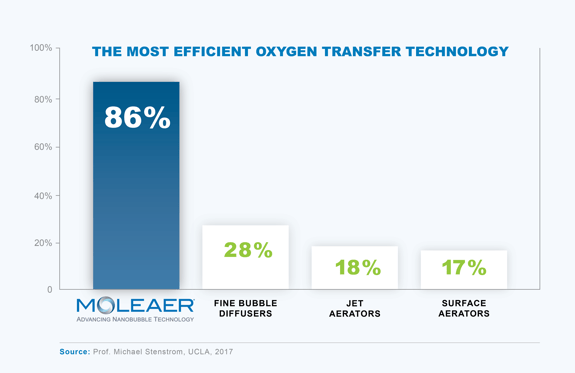
Moleaer’s Nanobubbles & Pathogen Control
Reza Ovissipour, Assistant Professor in the Department of Food Science and Technology at Virginia Tech demonstrated that Moleaer’s nanobubbles completely removed V. Parahaemolyticus biofilm within 2 min of exposure and reduced 1 to 3 log of E. Coli and Listeria biofilm within five minutes on both plastic and steal surfaces.
Generating Results with Nanobubble Technology
Moleaer is addressing the complexities of our global water resources by providing a scalable, chemical-free, and sustainable solution for companies around the globe. Moleaer generators are tailored to specific applications.
For instance, their Kingfisher is used to help restore lake and pond health through the power of nanobubbles and high gas transfer. This 40 GPM nanobubble generator was designed for hard-to-treat water bodies and provides a simple, effective tool for lake managers. Other generators manufactured by Moleaer include Clear, Lotus, Neo, Nexus, Titan Series, and XTB.
The Moleaer team uses the above-mentioned instrumentation and methods to provide companies with a comprehensive analysis of the nanobubbles being generated in a liquid solution, body of water, etc.
Their Research and Development team, led by Sohail Akhter, Ph.D., is composed of Ph.D. scientists and engineers with backgrounds in colloidal and surface chemistry, water chemistry & analysis, environmental engineering, civil engineering, chemical engineering, nanobubble technology, analytical instrumentation, 3D prototyping, and hydraulics.
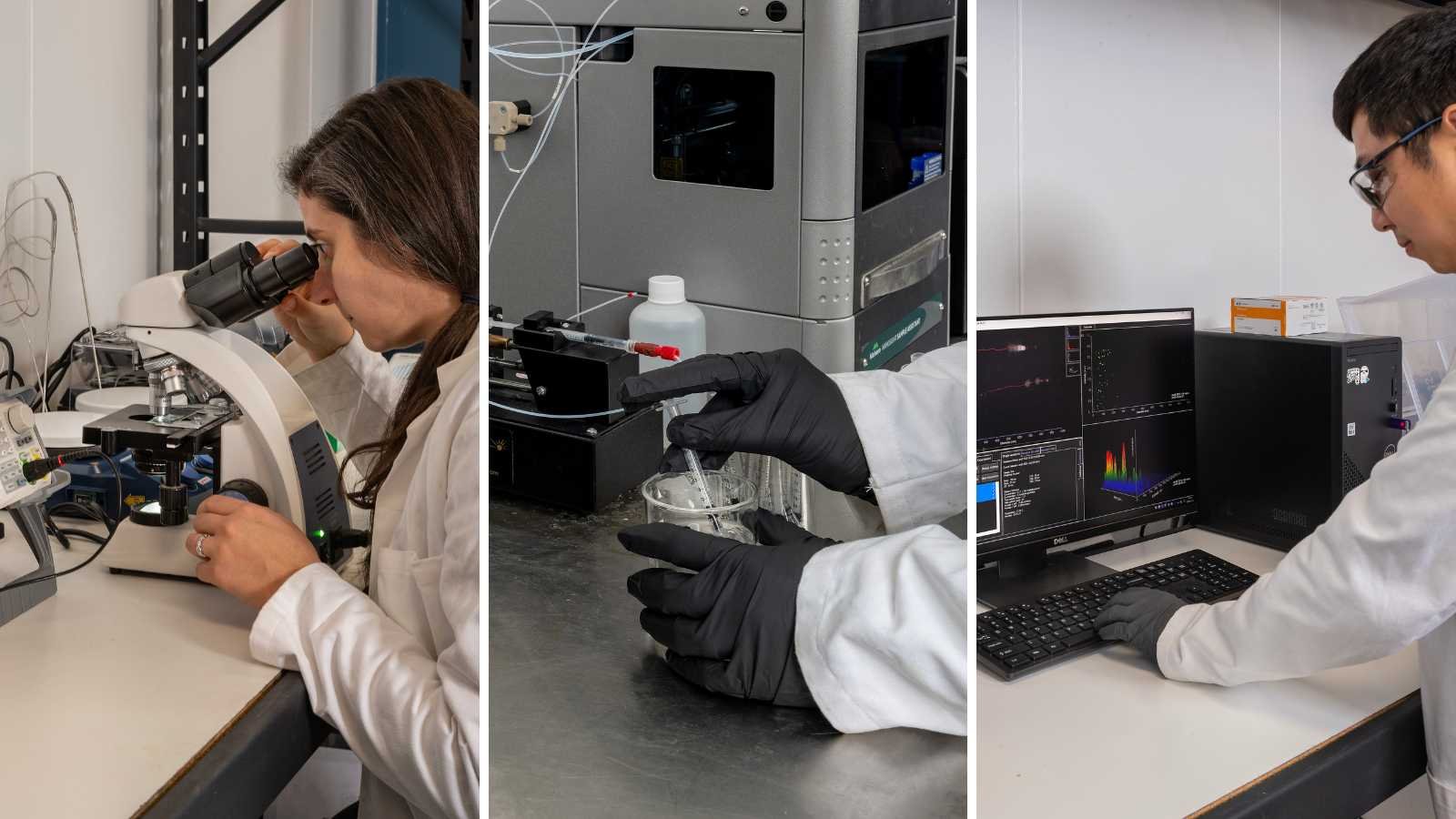
For Further Information
To learn more about how to measure, view, and study nanobubbles, check out a video titled “The Science Behind Nanobubble Technology,” a webinar produced jointly by scientists from Malvern Panalytical and Moleaer.
Contact Moleaer to learn more about this chemical-free water treatment with nanobubble technology.
Additional educational resources from Malvern Panalytical that you may find useful:
- Whitepaper: Characterization of nanobubbles and other ultrafine bubbles by Nanoparticle Tracking Analysis (NTA)
- Application Note: Nanobubble Applications and Characterization by Nanoparticle Tracking Analysis
- Blog: Those bubbles are Ultra-Fine!


